热点论文带您探究6G的无限可能——图书馆前沿文献专题推荐服务(8)
发布时间:2020-04-23

在上一期推荐中,我们重点关注了B5G和6G技术所依赖的基础材料的发展现状。在本期推荐中,我们开始着眼于刻画6G和未来通信系统所应用的技术和应用前景。
随着5G在全球范围内逐步扩大商业版图,研究人员已经开始将目光投向6G,来探讨未来的通信需求及应对方法。如同5G带来了全新的网络架构和部署理念一样,6G同样会做出前所未有的突破,将传统的地面移动网络与新兴的空间、空中和水下网络结合起来,提供全方位的网络覆盖以及满足更多应用的需求。6G所带来的新技术架构的变化,不仅包含了无处不在的3D覆盖、普及型人工智能以及增强的网络协议栈,太赫兹、可见光通信、新的通信范式、区块链和共生无线电也作为可被6G融合的技术备受关注。
本期同样选取了4篇文献,分别介绍了与6G中的新技术架构,车联网、空地组网以及普及型人工智能在6G网络中的进一步发展趋势,推送给相关领域的科研人员。

A Survey on Green 6G Network: Architecture and Technologies
Tongyi Huang, etc
IEEE Access,2019, 7:175758 - 175768
While 5G is being commercialized worldwide, research institutions around the world have started to look beyond 5G and 6G is expected to evolve into green networks, which deliver high Quality of Service and energy efficiency. To meet the demands of future applications, significant improvements need to be made in mobile network architecture. We envision 6G undergoing unprecedented breakthrough and integrating traditional terrestrial mobile networks with emerging space, aerial and underwater networks to provide anytime anywhere network access. This paper presents a detailed survey on wireless evolution towards 6G networks. In this survey, the prime focus is on the new architectural changes associated with 6G networks, characterized by ubiquitous 3D coverage, introduction of pervasive AI and enhanced network protocol stack. Along with this, we discuss related potential technologies that are helpful in forming sustainable and socially seamless networks, encompassing terahertz and visible light communication, new communication paradigm, blockchain and symbiotic radio. Our work aims to provide enlightening guidance for subsequent research of green 6G.
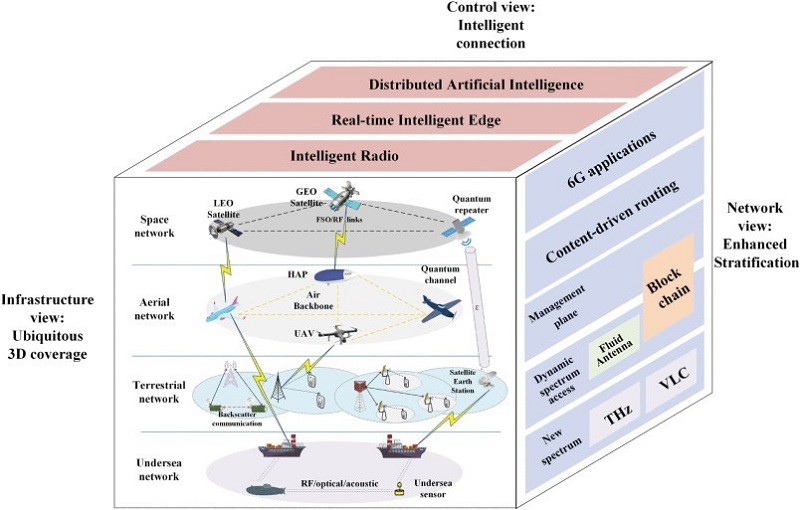
图1 绿色6G架构的不同维度

Future Intelligent and Secure Vehicular Network Toward 6G: Machine-Learning Approaches
Fengxiao Tang, etc.
Proceedings of the IEEE,2020,108(2): 292 - 307
As a powerful tool, the vehicular network has been built to connect human communication and transportation around the world for many years to come. However, with the rapid growth of vehicles, the vehicular network becomes heterogeneous, dynamic, and large scaled, which makes it difficult to meet the strict requirements, such as ultralow latency, high reliability, high security, and massive connections of the next-generation (6G) network. Recently, machine learning (ML) has emerged as a powerful artificial intelligence (AI) technique to make both the vehicle and wireless communication highly efficient and adaptable. Naturally, employing ML into vehicular communication and network becomes a hot topic and is being widely studied in both academia and industry, paving the way for the future intelligentization in 6G vehicular networks. In this article, we provide a survey on various ML techniques applied to communication, networking, and security parts in vehicular networks and envision the ways of enabling AI toward a future 6G vehicular network, including the evolution of intelligent radio (IR), network intelligentization, and self-learning with proactive exploration.
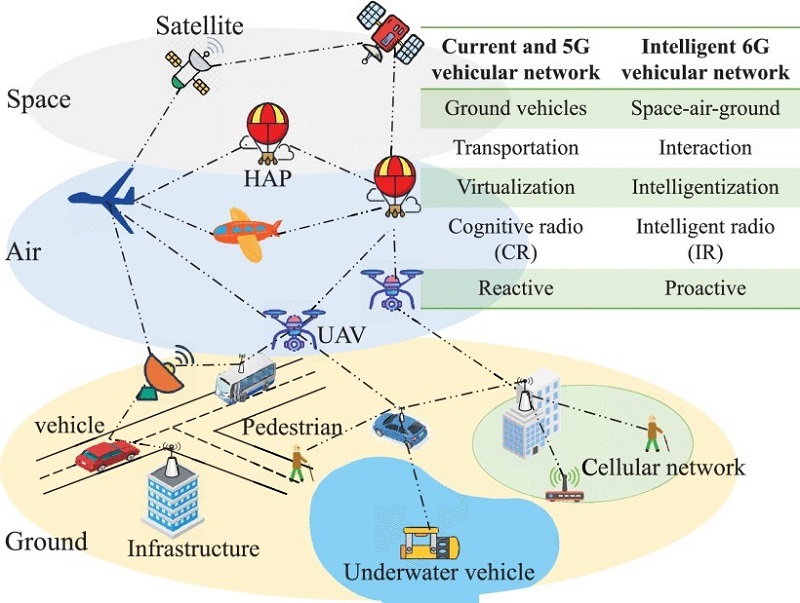
图2 6G中异构车辆网络的体系结构

Airplane-Aided Integrated Networking for 6G Wireless: Will It Work?
Xiaojing Huang, etc
IEEE Vehicular Technology Magazine,2019,14(3):84 - 91
As demand for wireless connectivity increases, communication technology is moving toward integrating terrestrial networks with space networks. Creating this integrated space and terrestrial network (ISTN) is critically important for industries such as logistics, mining, agriculture, fisheries, and defense. However, a number of significant technological challenges must be overcome for ISTN through low-cost airborne platforms and high-data-rate backbone links.
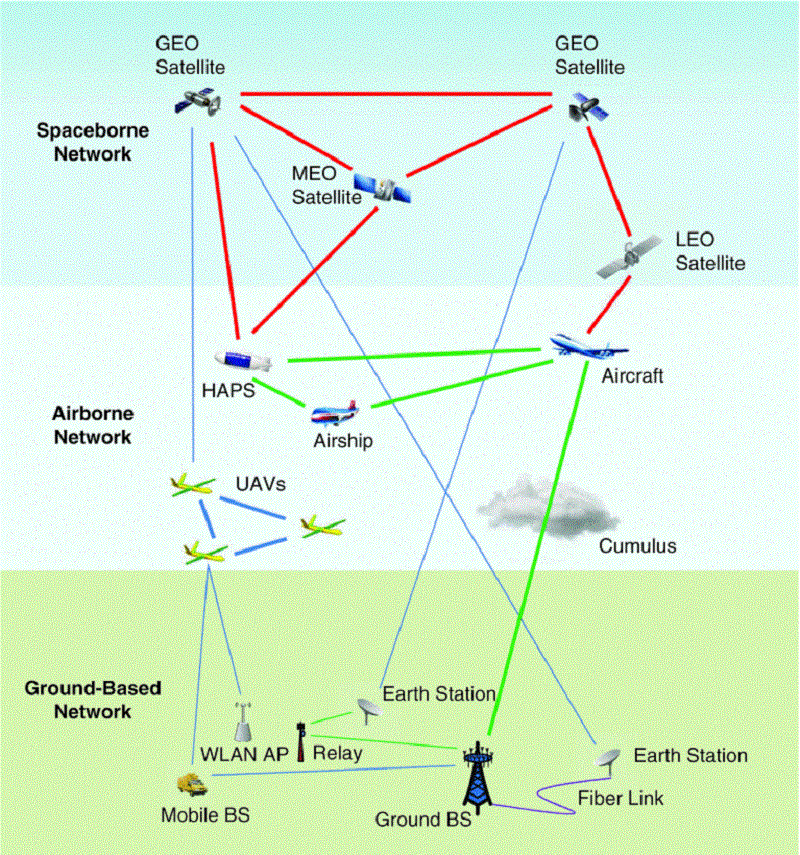
图3 空地组网连接不同的通信制式和网络节点

The Roadmap to 6G: AI Empowered Wireless Networks
Khaled B. Letaief, etc
IEEE Communications Magazine,2019,57(8):84-90
The recent upsurge of diversified mobile applications, especially those supported by AI, is spurring heated discussions on the future evolution of wireless communications. While 5G is being deployed around the world, efforts from industry and academia have started to look beyond 5G and conceptualize 6G. We envision 6G to undergo an unprecedented transformation that will make it substantially different from the previous generations of wireless cellular systems. In particular, 6G will go beyond mobile Internet and will be required to support ubiquitous AI services from the core to the end devices of the network. Meanwhile, AI will play a critical role in designing and optimizing 6G architectures, protocols, and operations. In this article, we discuss potential technologies for 6G to enable mobile AI applications, as well as AI-enabled methodologies for 6G network design and optimization. Key trends in the evolution to 6G will also be discussed.
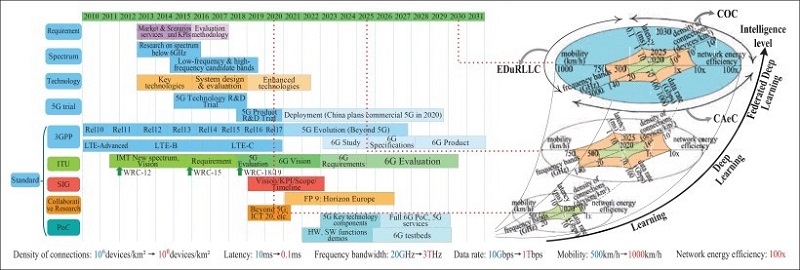
图4 6G的路线图,并列出了5G和6G要求之间的显式性能比较
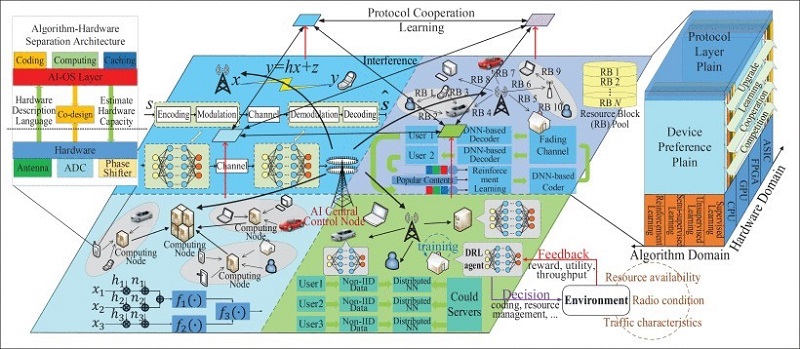
图5 6G的体系架构